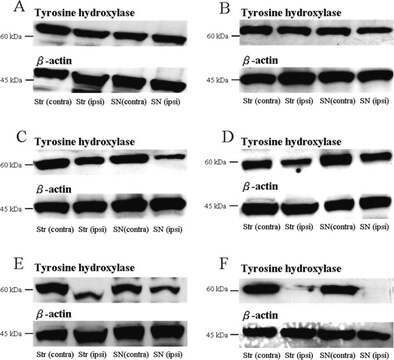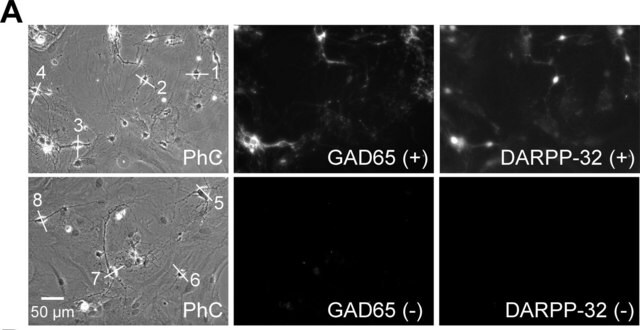AB1511
Anti-Glutamate Decarboxylase 65 & 67 Antibody
Chemicon®, from rabbit
Sinónimos:
65 kDa glutamic acid decarboxylase, Glutamate decarboxylase 65 kDa isoform, Glutamate decarboxylase-2 (pancreas), glutamate decarboxylase 2, glutamate decarboxylase 2 (pancreatic islets and brain,65kD), glutamate decarboxylase 2 (pancreatic islets and br
About This Item
Productos recomendados
biological source
rabbit
antibody form
saturated ammonium sulfate (SAS) precipitated
antibody product type
primary antibodies
clone
polyclonal
species reactivity
mouse, feline, rat, human
manufacturer/tradename
Chemicon®
technique(s)
immunohistochemistry: suitable
western blot: suitable
NCBI accession no.
UniProt accession no.
shipped in
dry ice
target post-translational modification
unmodified
Gene Information
human ... GAD2(2572)
General description
Specificity
Western blot reveals a doublet at approximately 65/68 kDa.
Immunohistochemical staining can be abolished by preincubation with 1-10 μg peptide (Catalog Number AG252) per mL of diluted antibody.
Immunogen
Application
1:200-1:5,000 dilution of a previous lot was used in immunohistochemistry (overnight PAP or ABC). Several fixative solutions may be used. Aldehyde-combination fixatives (i.e. those containing formaldehyde and glutaraldehyde) usually give satisfactory results. Bouin and Susa fixatives containing 0.1-0.2% glutaraldehyde have been used satisfactorily. Also reactive on paraffin embedded tissue. Protease digestion is not required.
Optimal working dilutions must be determined by the end user.
Neuroscience
Neurotransmitters & Receptors
Neuronal & Glial Markers
Quality
Western Blot Analysis:
1:500 dilution of this antibody detected GAD 65&67 on 10 μg of mouse brain lysates.
Target description
Physical form
Storage and Stability
Handling Recommendations: Upon first thaw, and prior to removing the cap, centrifuge the vial and gently mix the solution. Aliquot into microcentrifuge tubes and store at -20°C. Avoid repeated freeze/thaw cycles, which may damage IgG and affect product performance.
Analysis Note
Whole rat brain lysate, mouse brain cell extract.
Other Notes
Legal Information
Disclaimer
¿No encuentra el producto adecuado?
Pruebe nuestro Herramienta de selección de productos.
Optional
Storage Class
12 - Non Combustible Liquids
wgk_germany
WGK 1
flash_point_c
Not applicable
Certificados de análisis (COA)
Busque Certificados de análisis (COA) introduciendo el número de lote del producto. Los números de lote se encuentran en la etiqueta del producto después de las palabras «Lot» o «Batch»
¿Ya tiene este producto?
Encuentre la documentación para los productos que ha comprado recientemente en la Biblioteca de documentos.
Nuestro equipo de científicos tiene experiencia en todas las áreas de investigación: Ciencias de la vida, Ciencia de los materiales, Síntesis química, Cromatografía, Analítica y muchas otras.
Póngase en contacto con el Servicio técnico







